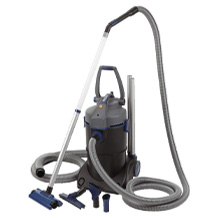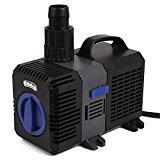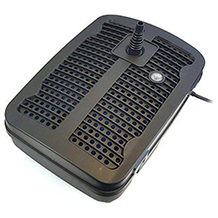Submersible pump purchasing advice: how to choose the right product
- The most important facts in brief
- Submersible pumps are lowered into liquids. They are operated below the water level and pump liquids above the surface.
- One conceivable use is in a full cellar or in a rain barrel.
- Most models have an electric motor and are powered by the mains. Others operate purely hydraulically, but require an additional hydraulic pump.
- An external float either prevents the pump from running dry or switches it on at a certain level.
- Decisive criteria for the purchase include the delivery height, the delivery rate, the delivery pressure and the question of whether only fresh water or also waste water may be conveyed.
What is a submersible water pump?
A submersible water pump is a centrifugal pump that is immersed in the liquid to be pumped. In this way, shafts, rain barrels, underground tanks and full cellars can be freed from water. In the private sector, pumping out water after a storm is just as conceivable as pumping rainwater from a cistern or nearby stream for watering flowers. For this purpose, submersible pumps use the principle of centrifugal force: a rotating impeller made of plastic or metal built into the pump transports the water from the depths into the connected pressure hose. Particularly powerful models are also used, for example, by disaster relief organisations such as the fire brigade or the Federal Agency for Technical Relief (THW) after a flood.
In most cases, these are electrically powered devices that are suitable for operation under water due to appropriate insulation. In addition, there are a few models that do not need a motor but rely on a hydraulic pump.
What is to be conveyed: Clear water or waste water?
When looking for a suitable submersible pump, a distinction must be made between models for clear water and those for waste water.
Clear water models
Submersible pumps designed to pump clear water should only be used for water without larger foreign bodies. The maximum particle size is usually three millimetres. If this value is exceeded, there is a risk of damage and pump failure in the long term.
Taking these conditions into account, clear water submersible pumps are suitable for pumping out wells, rain barrels and pools. The suction opening is placed close to the bottom, since under these conditions a muddy sediment is not to be expected. These are therefore shallow suction units that leave only a few millimetres of water at the bottom. This makes them valuable in the event of a burst water pipe indoors or a leaking washing machine, among other things. After all, there is hardly any liquid left behind that has to be laboriously mopped up by hand.
Dirty water models
Submersible wastewater pumps, on the other hand, are predestined for coarser debris: they can cope with much larger foreign bodies in the water – some models can handle particle sizes of up to 30 millimetres. This makes them usable for water that is mixed with mud, sand or pebbles. Conceivable uses include construction pits, ponds or outdoor flooding.
Dirty water pumps require a larger diameter for the suction of foreign bodies, which is why the suction opening is located somewhat higher up on the housing compared to the clear water models. Consequently, these models cannot suction as shallowly and a higher level of water remains that must be scooped and mopped up manually.
Decisive purchase criteria
When looking for a suitable submersible pump, the type of water to be pumped, the water delivery rate, the delivery pressure, the immersion depth and the delivery head are decisive factors.
Diving depth
Both the pump housing and the mechanics inside are designed for certain pressure limits. At a diving depth of ten metres, a pressure of about two bar acts on the submersible pump. The pump base with the suction opening above it is always placed on the floor of the room or tank that is to be pumped out. The immersion depth is measured in each case from the top of the housing to the water surface. If you exceed the specified limits, you run the risk of damaging the submersible pump. The maximum possible immersion depth is directly related to the delivery head.
Headroom
The delivery head is one of the most important criteria when choosing a submersible pump model. It indicates how many metres the pump can transport water to the surface, i.e. “upwards“. Inside a submersible pump, an impeller rotates and in this way generates kinetic energy that is necessary to overcome the flow resistance. In other words, the more powerful the motor, the deeper the device can be lowered below the water surface and the longer the connected hose may be. If the pump is undersized for its intended use or delivery height, no more water will reach the hose outlet. Most models for private use have a delivery head of five to eight metres. You should not calculate too tightly in this respect and ideally plan a buffer in the form of a higher delivery head.
Indication of the head
The delivery head of a submersible pump is specified either in metres (m) or in metres of water column (mH2O).
Delivery rate
Most submersible pumps have a capacity of 100 to 2,500 litres per hour; particularly powerful submersible pumps have a capacity of twice that. Base your decision regarding the amount of power on your needs so that the pump is neither too weak nor wastes energy and thus causes unnecessarily high operating costs. For watering flowers, you usually need less power than for operating a large cascading fountain with a waterfall.
Delivery pressure
The pressure of a submersible pump is given in bar. The delivery head is directly related to the pressure output. With a stated delivery head of ten metres, the submersible pump has a pressure output of one bar. A pump with a delivery head of 50 metres, on the other hand, requires a delivery pressure of at least 5 bar. The length of the hose line from which the water is ultimately to flow should also be included in the calculation. As the delivery distance increases, the pressure also decreases on horizontal delivery lines.
Float switch
Submersible pumps are available with and without floats. Models with a float switch have the advantage that they react to changes: If the water level drops, the float switch becomes horizontal and drops down. This causes the submersible pump to switch off automatically. On the one hand, this guarantees that the pump does not run dry and the motor does not overheat. On the other hand, the pump can switch itself on again automatically if necessary – precisely when the water level rises again. A well-adjusted float switch therefore allows unattended operation. To ensure proper functioning, the float switch must have a flexible, non-rigid connection cable. Only then is it able to follow the water level at all times.
The individual models have a specific switch-on moment at which the shimmer reacts. It usually varies between a water level of 8 to 30 centimetres. Plan for a certain water level that must be reached so that the pump activates automatically.
Material
Most models have a plastic housing. This design is light, inexpensive and requires little maintenance. Stainless steel, on the other hand, promises a long service life. So if the pump is exposed to strong dirty water conditions, a stainless steel housing is recommended, as plastic is easily attacked and porous under these conditions. The same applies to the impeller inside the submersible pump: while dirt particles quickly add damage to a plastic impeller, depending on its size, and can thus reduce the pumping capacity, a stainless steel impeller is also more durable. Reinforcements on the power cable and the transitions to the housing ensure that the cable does not break even under heavy and long-term stress.
Hose diameter
Submersible pumps usually have connections for hoses with a diameter of one or two inches. The larger the hose diameter, the more flow is possible. Models in the private sector are usually operated with one-inch hoses. It is advisable to always use the appropriate connections, because even tapered adapters can reduce the flow due to frictional resistance. Connected accessories should always be checked for pressure loss and only used when really necessary. Often these are unnecessary pressure reducers. Last but not least: The outlet hose should only be as long as necessary, because unused travel distance also has a negative effect on the flow rate.
Practical extras
Almost all submersible pumps have a carrying handle for easy transport – after all, unlike a deep well pump, for example, which usually remains in a shaft, the models are used flexibly wherever they are needed. A cable winder makes it easier to roll up the power cable and prevents it from becoming a tripping hazard during transport.
Some models also have fold-out feet. In this way, it is possible, for example, to switch between a shallow suction mode or a higher water flow rate. In folded mode, some models achieve a residual water height of only one to two centimetres.
How can the pump curve help in the purchase decision?
The pump curve or pump diagram is a compulsory information that the manufacturer must print in the manual or on the box. It can be an important aid to decision-making for those who are undecided, because it allows a statement to be made about the delivery capacity in relation to the delivery head. The delivery head is taken as the basis for the predicted amount of water that comes out at the water surface or at the end of the hose line. Finally, the flow rate can be read from the characteristic curve on the basis of the desired delivery head. The characteristic curves are not linear, but vary from model to model. For example, the amount of water delivered can differ considerably between two different models with a delivery height of three metres. Let’s assume that the delivery head is high:
While one pump still has limited capacity, another no longer delivers any water at all to the surface.
Alternatives for special requirements
If you want to pump water from well shafts that are deeper than eight metres, you should choose a deep well pump. However, a deep well pump can quickly cost three to five times as much as a conventional submersible pump.
Another special pump that you can use to pump water from great depths is the so-called submersible pressure pump. It functions very similarly to an ordinary submersible pump. However, the focus of submersible pressure pumps is not on the delivery rate, but on the delivery depth. With these special pumps, delivery depths of up to 50 metres are possible. This means that, unlike submersible pumps, they are also suitable for pumping water from deep wells and cisterns. For this purpose, submersible pressure pumps pump 5,000 to 8,000 litres of water per hour.
Shallow suction pumps are special submersible pumps that have the advantage that they can also suck up very deep water with a water level of up to one millimetre. This makes them interesting for households for cleaning after a flood or washing machine or dishwasher damage. Attention must also be paid to whether the models are suitable for use in dirty water.
Submersible pumps are also used in aquariums. These aquarium pumps are special pumps that force the water through a filter or filter substrate to clean it of suspended particles.

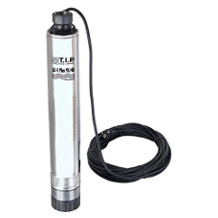
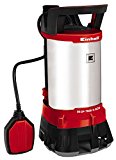
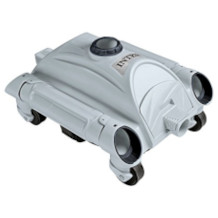
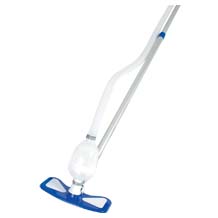
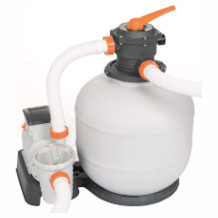
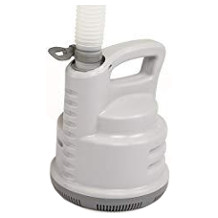
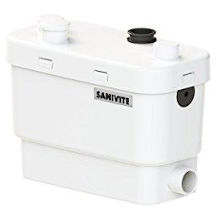
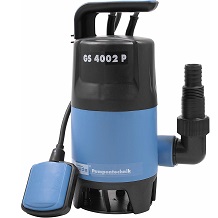
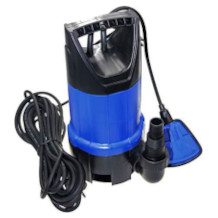
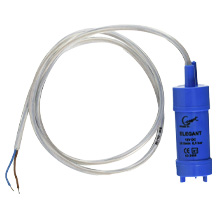
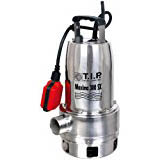
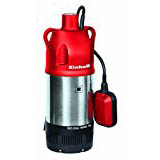
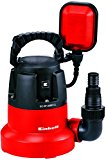
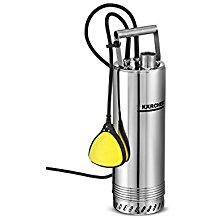
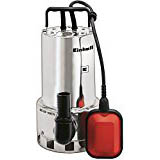
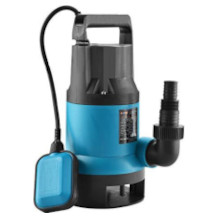
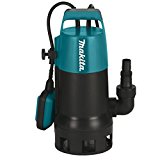
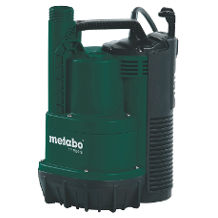
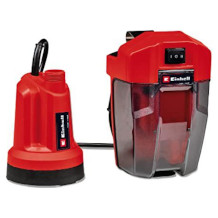
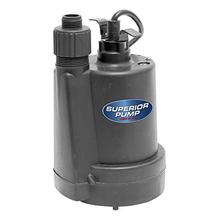
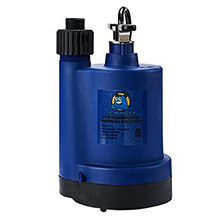

 7,549 reviews
7,549 reviews

